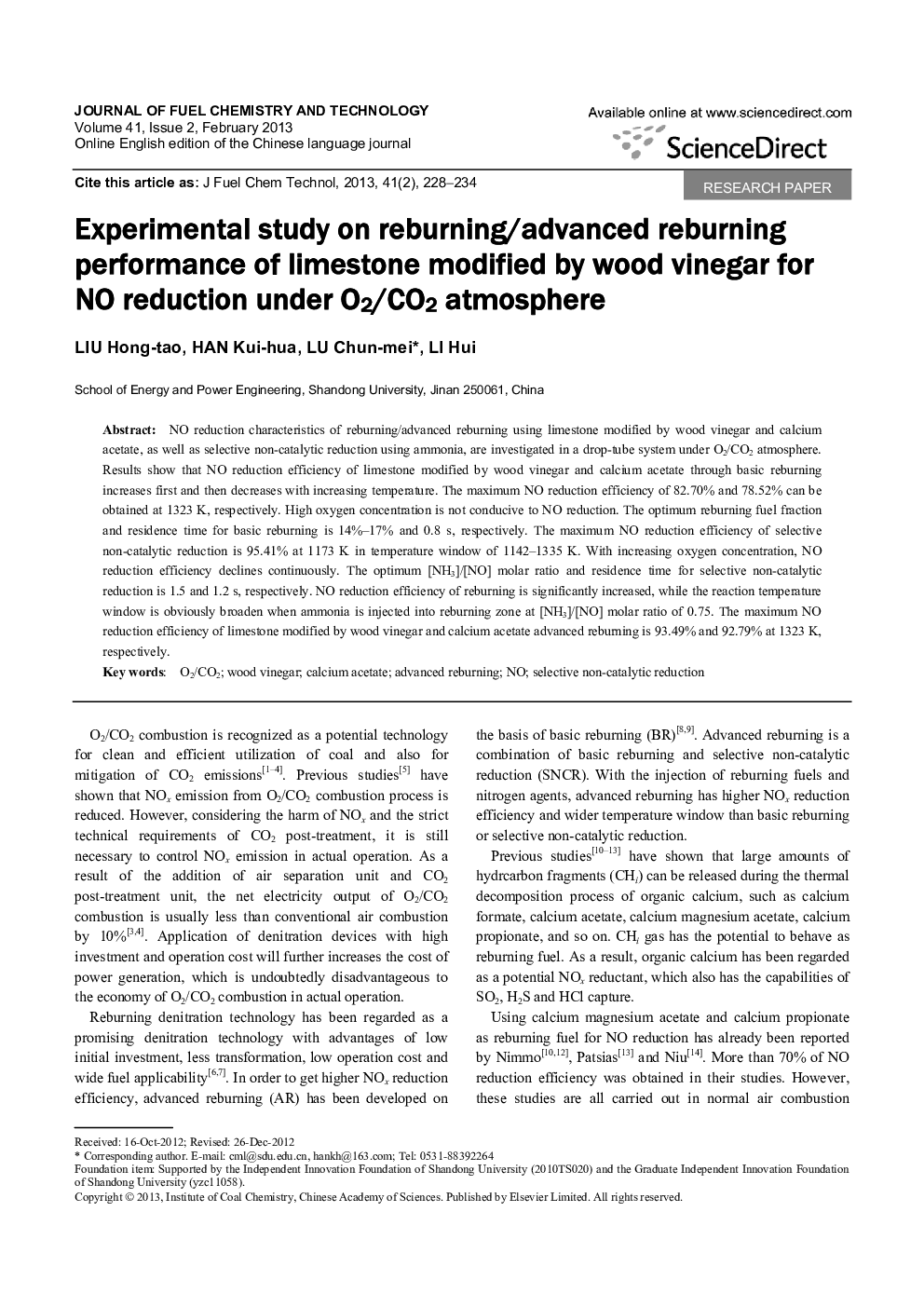| کد مقاله | کد نشریه | سال انتشار | مقاله انگلیسی | نسخه تمام متن |
|---|---|---|---|---|
| 64242 | 48304 | 2013 | 7 صفحه PDF | دانلود رایگان |

NO reduction characteristics of reburning/advanced reburning using limestone modified by wood vinegar and calcium acetate, as well as selective non-catalytic reduction using ammonia, are investigated in a drop-tube system under O2/CO2 atmosphere. Results show that NO reduction efficiency of limestone modified by wood vinegar and calcium acetate through basic reburning increases first and then decreases with increasing temperature. The maximum NO reduction efficiency of 82.70% and 78.52% can be obtained at 1323 K, respectively. High oxygen concentration is not conducive to NO reduction. The optimum reburning fuel fraction and residence time for basic reburning is 14%–17% and 0.8 s, respectively. The maximum NO reduction efficiency of selective non-catalytic reduction is 95.41% at 1173 K in temperature window of 1142–1335 K. With increasing oxygen concentration, NO reduction efficiency declines continuously. The optimum [NH3]/[NO] molar ratio and residence time for selective non-catalytic reduction is 1.5 and 1.2 s, respectively. NO reduction efficiency of reburning is significantly increased, while the reaction temperature window is obviously broaden when ammonia is injected into reburning zone at [NH3]/[NO] molar ratio of 0.75. The maximum NO reduction efficiency of limestone modified by wood vinegar and calcium acetate advanced reburning is 93.49% and 92.79% at 1323 K, respectively.
Journal: Journal of Fuel Chemistry and Technology - Volume 41, Issue 2, February 2013, Pages 228-234